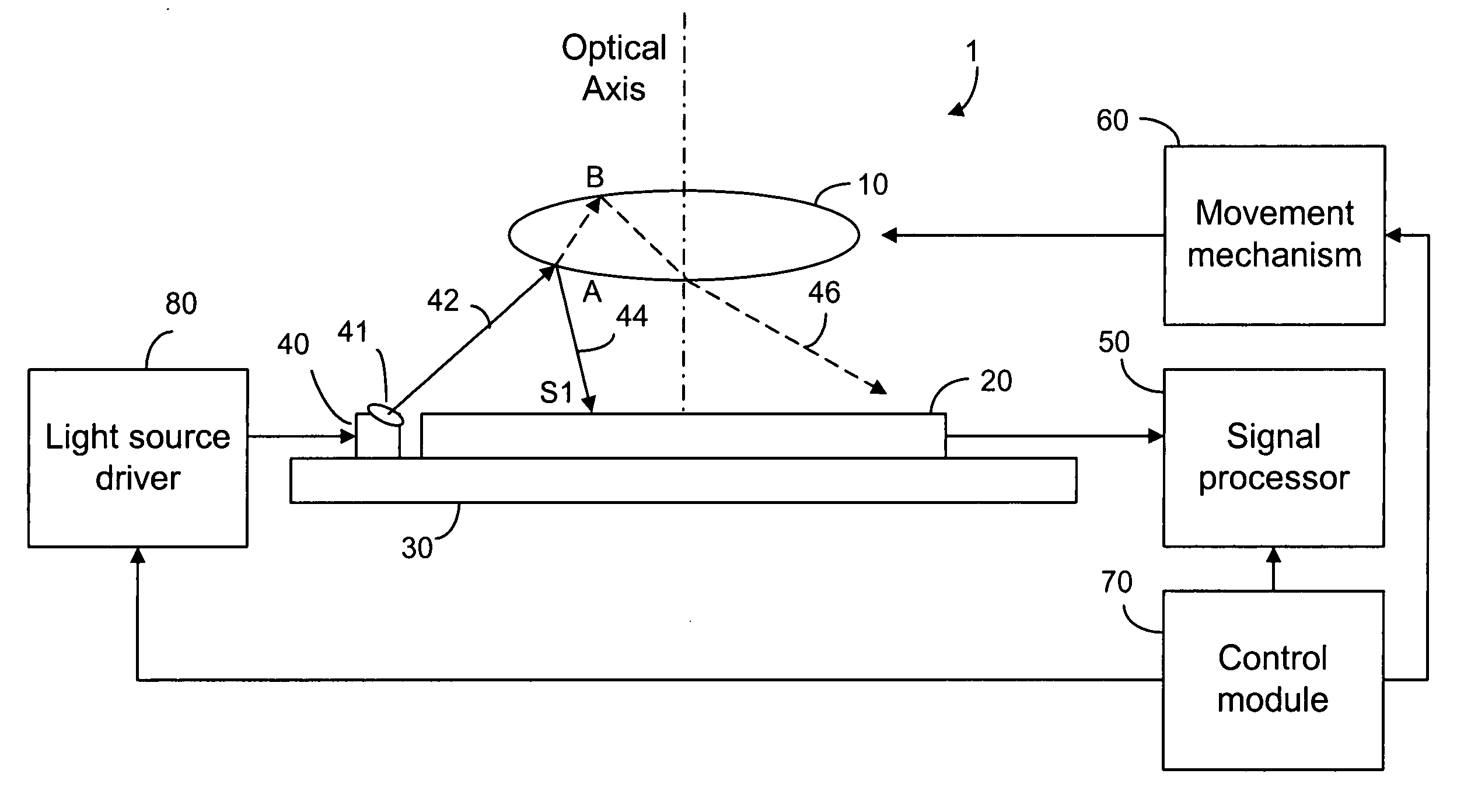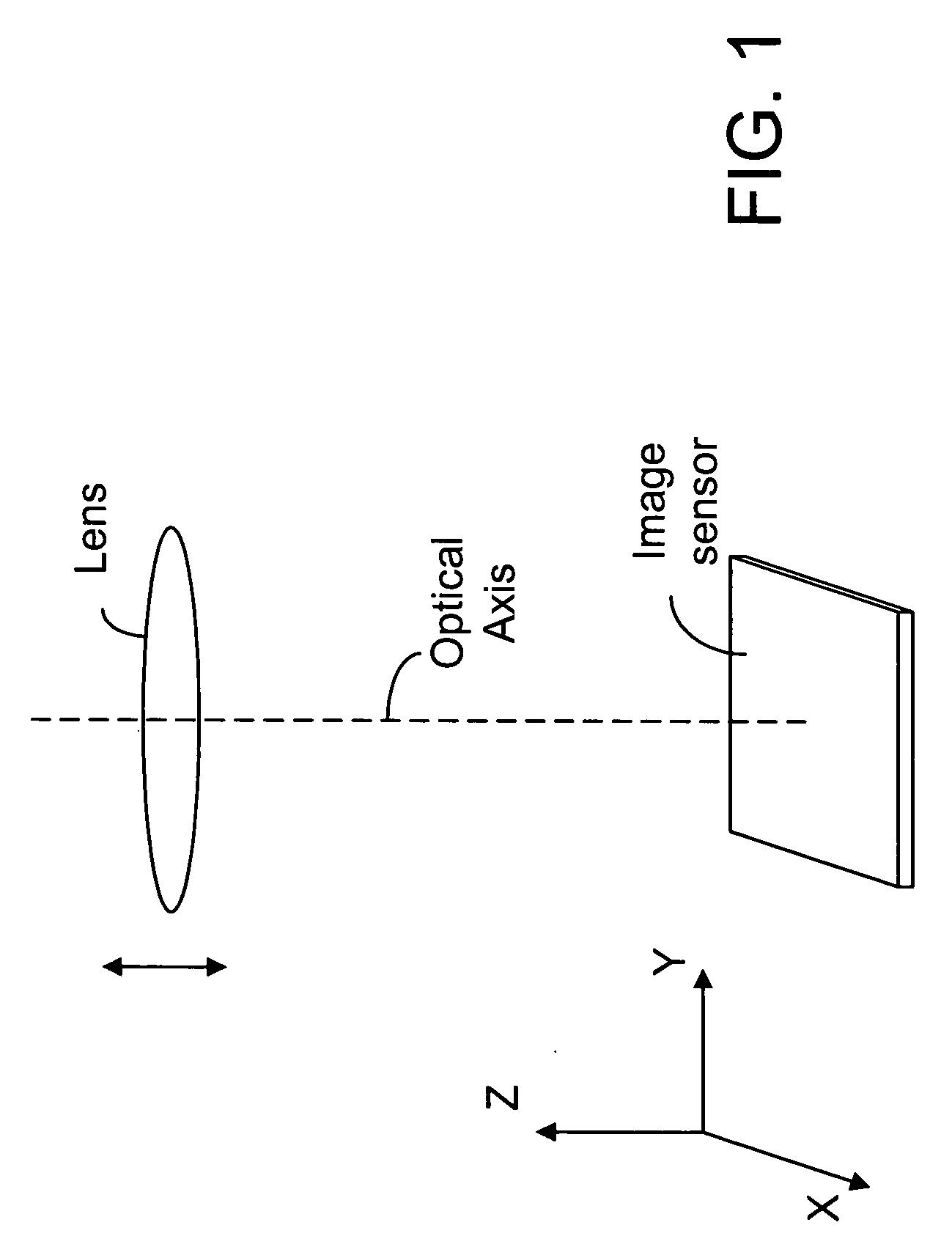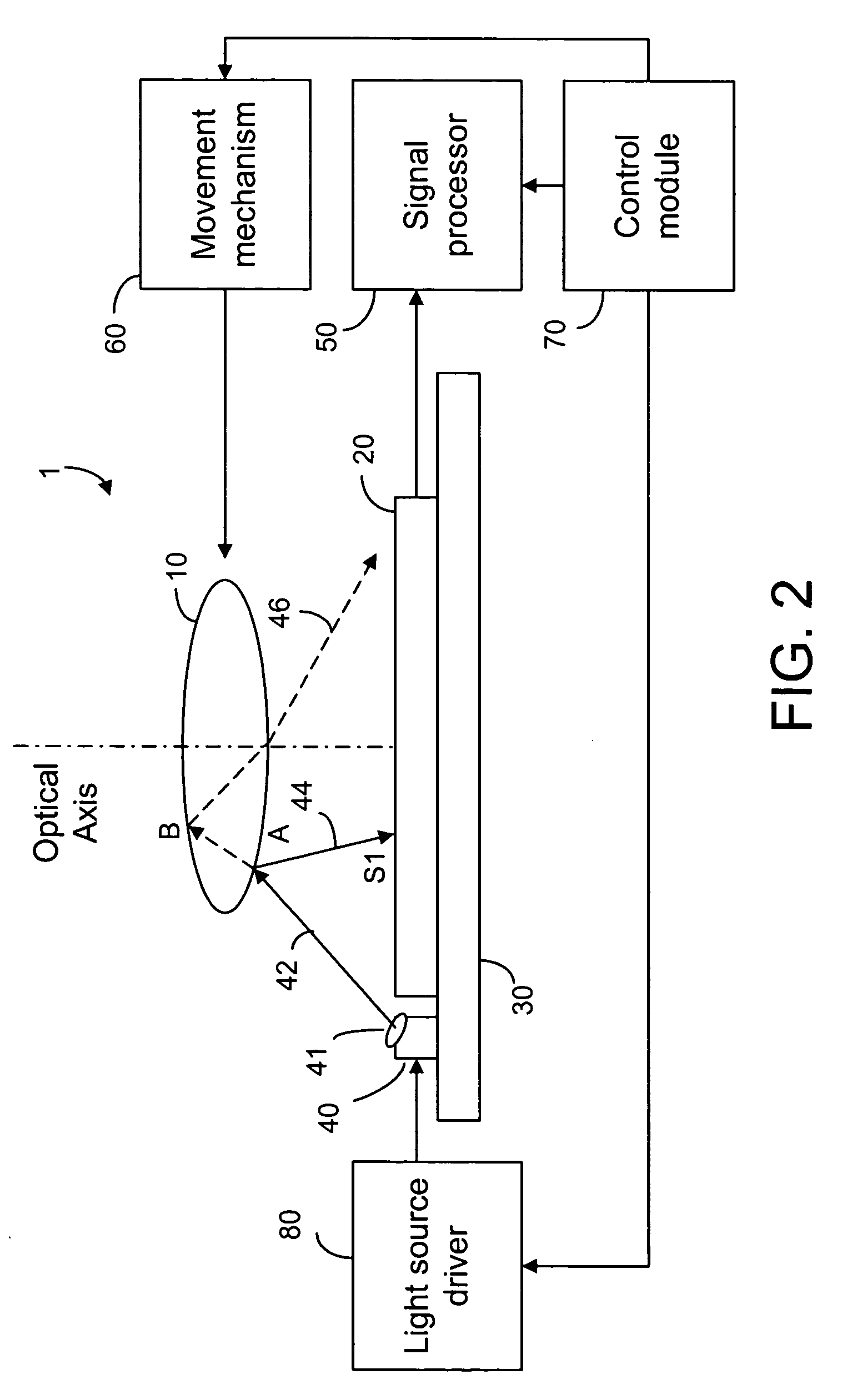Method and device for position sensing of an optical component in an imaging system
a technology of optical components and optical position sensors, applied in the direction of cameras, instruments, printers, etc., can solve the problems of distorted significant changes in the shape of light spots on image sensors
- Summary
- Abstract
- Description
- Claims
- Application Information
AI Technical Summary
Benefits of technology
Problems solved by technology
Method used
Image
Examples
Embodiment Construction
[0014]Imaging applications such as auto-focus lens systems and optical zoom systems require high precision in position sensing. In such applications, at least one lens element is moved along the optical axis of the imaging system so as to change the focal plane of the lens or the magnification of the image formed on an image sensor. As shown in FIG. 1, the movement of the lens element is substantially along the optical axis which is parallel to the Z axis. The image sensor is located in an image plane which is substantially parallel to the XY plane. The imaging system may have one or more stationary lens elements as depicted in dotted lines.
[0015]In auto-focus or optical zoom applications, it is required to determine the position of the lens element relative to a reference point or a home position. According to the present invention, a light beam is used to illuminate a spot on the surface of the lens element such that the reflected light beam from the lens surface encounters a spot...
PUM
 Login to View More
Login to View More Abstract
Description
Claims
Application Information
 Login to View More
Login to View More - R&D
- Intellectual Property
- Life Sciences
- Materials
- Tech Scout
- Unparalleled Data Quality
- Higher Quality Content
- 60% Fewer Hallucinations
Browse by: Latest US Patents, China's latest patents, Technical Efficacy Thesaurus, Application Domain, Technology Topic, Popular Technical Reports.
© 2025 PatSnap. All rights reserved.Legal|Privacy policy|Modern Slavery Act Transparency Statement|Sitemap|About US| Contact US: help@patsnap.com



